
Barnsley is a market town in South Yorkshire, England. It is the main settlement of the Metropolitan Borough of Barnsley and the fourth largest settlement in South Yorkshire. The town's population was 96,888 in 2021, while the wider borough had a population of 244,600 in the 2021 census.
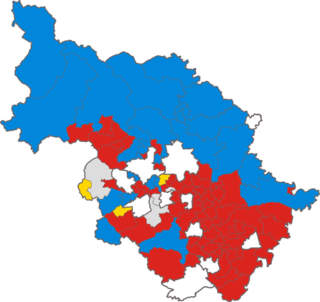
The 1952 West Riding County Council election was held on Saturday, 5 April 1952. The election took place in the administrative county of the West Riding of Yorkshire, which excluded the county boroughs of Barnsley, Bradford, Dewsbury, Doncaster, Halifax, Huddersfield, Leeds, Rotherham, Sheffield, Wakefield and York. The whole council of ninety-six members was up for election, with each county electoral division returning one councillor.

The 1955 West Riding County Council election was held on Saturday, 2 April 1955. The election took place in the administrative county of the West Riding of Yorkshire, which excluded the county boroughs of Barnsley, Bradford, Dewsbury, Doncaster, Halifax, Huddersfield, Leeds, Rotherham, Sheffield, Wakefield and York. The whole council of ninety-six members was up for election, with each county electoral division returning one councillor.
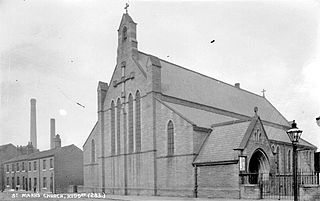
The former St Mark's Church, Old Leeds Road, Huddersfield, was an Anglican parish church in West Yorkshire, England. It was previously known as St Mark's, Leeds Road, before the road name was changed. This building was designed in 1886 by William Swinden Barber when the parish of St Peter's was split and a new building was required to accommodate a growing congregation. It was opened in 1887. Among the vicars posted in this benefice were the very popular Canon Percy Holbrook, the notoriously unfortunate Reverend Jonas Pilling who was involved in a standoff with his congregation for many years, the sociable Reverend Robert Alfred Humble who died in mysterious circumstances, and the eloquent preacher Reverend Joseph Miller, who had previously been a Congregational minister. The building was sold by the Church of England in 2001, and it has been converted into a block of offices.
Robert Alfred Humble was an Anglican priest, born in Heathery Cleugh, Weardale, Durham, England. His father was Reverend Emerson Humble (1837–1901). His career was marked with much pastoral work, including organising local fundraising events and meals for the elderly. He contributed to the work of committees, and joined in local social events, being a member of his church's cricket team. He was a "very popular figure." It is in this context of sociability and regular work among his congregation that the events surrounding the delayed discovery of his death, mentioned in several newspapers, remain a puzzle. Having suffered a seizure, he apparently lay openly on a flower bed in his vicarage garden on a dark February night, while his congregation spent eleven hours searching for him on the adjacent moorland. One of Rev. Humble's incumbencies was St Mark's, Old Leeds Road, Huddersfield, 1897–1901.
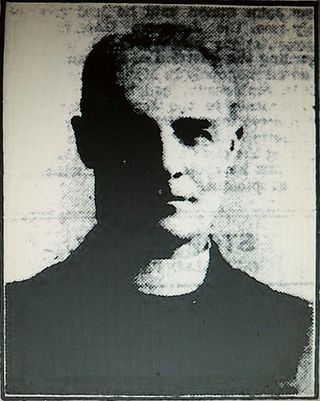
Reverend Joseph Miller BD was a Congregational minister, much in demand as an "eloquent preacher" for 14 years in the north of England. While in Hamburg during his ministry he "rendered valuable assistance to his countrymen in distress" following a call from the American Embassy there. However, in 1929 he "created a sensation" by becoming an Anglican priest. His first Anglican incumbency was as vicar of the Church of St Mark, Old Leeds Road, Huddersfield, England, from 1929 to 1931.

Catherine Mawer was an architectural sculptor who worked alongside her husband Robert Mawer, then following his death in 1854 she ran the family stone yard as a master sculptor at Great George Street, Leeds, West Yorkshire, England, until 1859. The other master sculptor in her 1854–1859 company, which was known as Mrs Mawer, was her nephew William Ingle who supervised the stone yard and onsite works from 1854. Her apprentices were Matthew Taylor, Benjamin Payler, and her son Charles Mawer. All the apprentices later had independent careers as sculptors. After her son came of age in 1870, she continued working alongside Charles and her nephew William in the partnership Mawer and Ingle at the same address. Catherine was a founder member of the Mawer Group, which comprised all of the above Leeds architectural sculptors. During her lifetime, the Mawer group produced some strongly lifelike and often unflattering portraits, full of movement, including portraits of men with overhanging moustaches and cavernous mouths. These portraits continued after the deaths of Robert Mawer and William Ingle, but stopped appearing at her death in 1877. It is therefore reasonable to conclude that this style of work was her own.

Charles Mawer (1839–1903) was an architectural sculptor, based in Leeds, West Yorkshire, England. He was the son of sculptors Robert and Catherine Mawer and the cousin of William Ingle. He was apprenticed to his father, and worked within the partnership Mawer and Ingle alongside his cousin William and his own mother between 1860 and 1871, and then ran the stone yard himself until he formed a partnership with his fellow-apprentice Benjamin Payler in 1881. Following that date, his whereabouts and death are unknown. His last major work for Mawer and Ingle was Trent Bridge, where he carved alone, following the death of William Ingle. He is noted for his work on the rebuilding of the mediaeval Church of St Michael and All Angels, Barton-le-Street, completed in 1871, where he repaired and recreated damaged and missing Romanesque carvings, and for his carving on William Swinden Barber's 1875 Church of St Matthew, Lightcliffe. Charles' last known work ornaments another Barber church: the 1880 Church of St Thomas the Apostle, Killinghall. Charles was a member of the Mawer Group of Leeds architectural sculptors, which included those mentioned above, plus Matthew Taylor.
Mawer and Ingle was a company of architectural sculptors, based in Leeds, West Yorkshire, England, between 1860 and 1871. It comprised cousins Charles Mawer and William Ingle (1828–1870), and Catherine Mawer (1804–1877) who was mother of Charles and aunt of William. The group produced carvings on many Gothic Revival churches and their internal furnishings. They also worked on civic buildings, warehouses and offices. Many of these are now listed by Historic England, and many of the surviving buildings are within Yorkshire. Their work outside Yorkshire included Trent Bridge.

Benjamin Payler, , was a sculptor, stone and marble mason. He was apprenticed to Catherine Mawer, alongside fellow apprentices Matthew Taylor and Catherine's son Charles Mawer. He formed a business partnership at 50 Great George Street with Charles Mawer in 1881. There is no known record of Charles after that. Payler continued to run the business there under his own name. In his day, he was noted for his 1871 bust of Henry Richardson, the first Mayor of Barnsley, his keystone heads on the 1874 Queen's Hotel in the same town, and his architectural sculpture on George Corson's 1881 School Board offices, Leeds. Payler was a member of the Mawer Group, which included the above-mentioned sculptors, plus William Ingle.
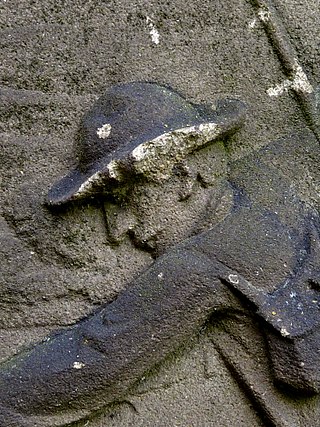
Matthew Taylor was a sculptor based in Leeds and Arthington, West Yorkshire, England. He was apprenticed to Catherine Mawer, and was known in his day for bust, medallion and relief portraits, and statues. He exhibited some of these in Leeds Art Gallery during the last decade of his life. Between 1861 and 1876 he worked in partnership with Benjamin Burstall (1835–1876); they executed the sculpture on the Town Hall at Bolton in Greater Manchester. After Taylor's death, in 1905 his work received further recognition when Reverend W.T. Adey praised his carving on William Taylor's gravestone at Woodhouse Cemetery, Leeds, and named it the "Angler's Tomb." That work is now a listed monument. Taylor was a member of the Mawer Group, which included the above-mentioned sculptors, plus Robert Mawer, Charles Mawer, Benjamin Payler and William Ingle.
Benjamin Burstall was a sculptor, architectural sculptor and stone carver, based in Leeds, West Riding of Yorkshire, England.
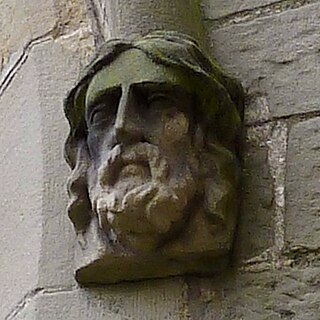
William Ingle was an architectural sculptor in Leeds, West Yorkshire, England. He specialised in delicately undercut bas relief and small stand-alone stone sculptures of natural and imaginary flora and fauna on churches and on civic, commercial and domestic buildings. He was apprenticed to his uncle Robert Mawer. After Mawer's death in 1854 he worked in partnership with his aunt Catherine Mawer and his cousin Charles Mawer in the company Mawer and Ingle. Notable works by Ingle exist on Leeds Town Hall, Endcliffe Hall, Sheffield and Moorlands House, Leeds. He sometimes exhibited gentle humour in his ecclesiastical work, such as faces peering through greenery, and mischievous humour on secular buildings, such as comic rabbits and frogs among foliage. He died of tuberculosis at age 41 years, having suffered the disease for two years.
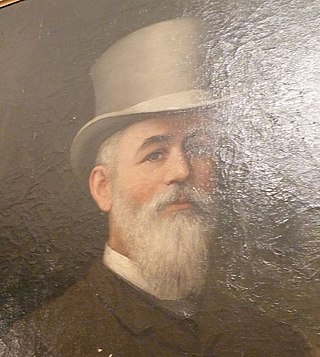
Isaac Thomas Shutt was an architect, a farmer, and the proprietor of the Old Swan Hotel, Harrogate, then in the West Riding of Yorkshire, England, from 1849 to 1879. In 1842, at the age of 24 years, he designed the Royal Pump Room, Harrogate, now a Grade II* listed building. In partnership with Alfred Hill Thompson he co-designed the Church of All Saints, Harlow Hill.
Alfred Hill Thompson, ARIBA was an English architect in the Gothic Revival and Arts and Crafts styles, who specialised in small schools and chapels in the Yorkshire area. In partnership with Isaac Thomas Shutt he co-designed the Church of All Saints, Harlow Hill, completed in 1871.

The Church of All Saints, Harlow Hill, Harrogate, North Yorkshire, England, is a grade II listed mission church, or chapel of ease, completed in 1871 on land donated by Henry Lascelles, 4th Earl of Harewood, within the parish of St Mary. It was consecrated by the Bishop of Ripon in 1871. The building was designed with a round bell tower, in Gothic Revival style, by Isaac Thomas Shutt and Alfred Hill Thompson. After some years of closure due to structural problems, as of 2014 it was being restored for use by a funeral director's company.
The Willson Group of artists was an English Quaker family of about seven landscape, portrait and caricature painters. Members included John Joseph Willson, his sister Hannah Willson, his wife Emilie Dorothy Hilliard, and their four children, Michael Anthony Hilliard Willson, twins Margaret Willson and E. Dorothy Willson, and Mary Hilliard Willson.

Kathleen Chambers CBE was a pioneer female politician who was the first woman to be Lord Mayor of Bradford holding that position in 1945–1946.

Thomas Holroyd was an English portrait and landscape painter working in Harrogate, North Riding of Yorkshire, England. Before his marriage he undertook painting tours to the United States, Canada, Europe, Egypt, Russia and the Holy Land. Returning to Harrogate, he painted portraits of the local worthies there. He shared responsibility for the successful photography business T & J Holroyd with his brother James, and continued to run the business after his brother died. Holroyd was a founding member of Harrogate Liberal Club.

David Simpson was an English builder, politician, property developer and contractor who was four times mayor of Harrogate, and three times deputy mayor. He developed the whole of the Duchy Estate, a major residential quarter for the rich, more than doubling the rateable value of the town in the first quarter of the 20th century. He was a member of Harrogate Borough Council for 34 years, making him the "father" of the council by the end of his career there. He was a justice of the peace and the first honorary Freeman of the Borough of Harrogate. He was president of the Bilton Ward Conservatives, a member of the Knaresborough Board of Guardians and an alderman of West Riding County Council. He built himself a large, castellated mansion called Oakdale, in 1903, besides the even larger Grand Hotel in Harrogate in the same year..
















